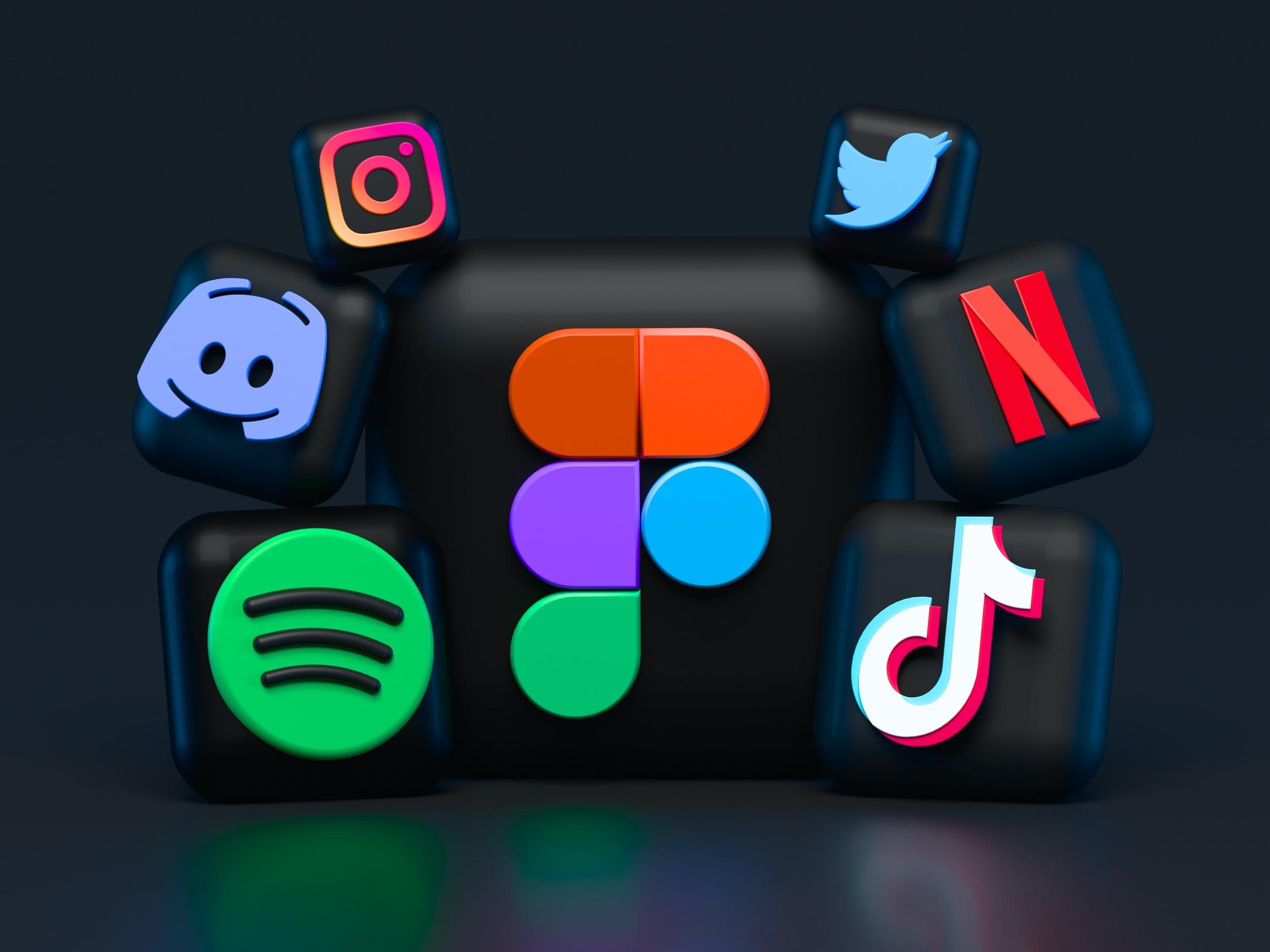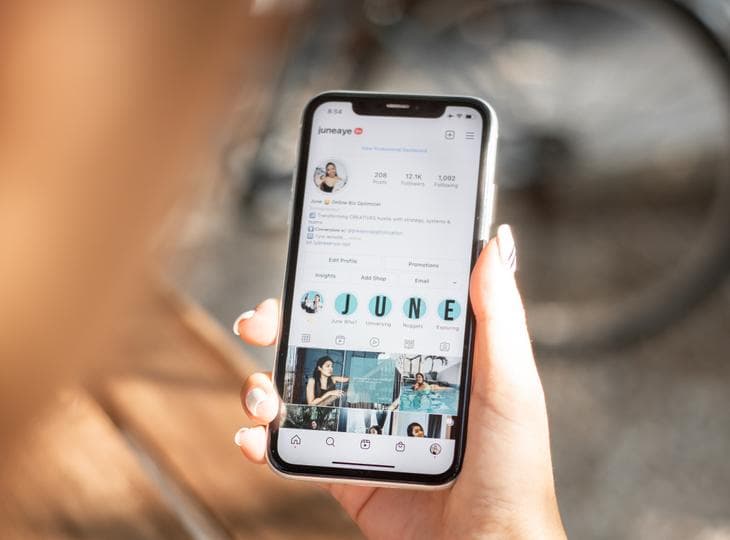How to Market your Podcast on Social Media in 2023
12 minutes read
podcastsgrowthmarketing

Social media platforms are indispensable tools for building an audience around your podcast. According to 2023 data by Edison Research 36% of Black monthly podcast listeners discovered podcasts on social media, up from 31% in 2021. We can assume that a similar number percentage applies to the general population.
So if you want reach a wider audience, build brand awareness and connect with listeners its very important that you have an active social media presence for your podcast.
In this article we will cover all of the essentials needed to start marketing your podcast on social media.
Table of Contents
Setting up your social media presence
What are the best platforms for my podcast?
Choosing the right social media platforms for your podcast is important for implementing an effective social media marketing strategy. Which platforms are the best for your podcast will depend on several factors including but not limited to:
- Where your audience spends most of their time
- Which social media platforms you enjoy using the most
- How much time you have to produce content
Its also useful to take a look at where podcast listeners hangout in general.

According to a survey conducted by Podcast Insights in 2021, here are the most popular social media platforms used by podcast listeners.
- Facebook - 47.8% of podcast listeners reported using Facebook for podcast-related content
- Twitter - 39.2%
- Instagram - 28.5%
- YouTube - 27.3%
- LinkedIn - 15.5%
As noted before these numbers can vary graetly depending on your specific audience. However, overall, Facebook and Twitter seem to be the most popular platforms for podcast-related content.
On how many social media platforms should I have my podcast?

If you are just starting out we recommend that you focus most of your time on one or two platforms maximum, so choose the ones where you think you can have the most impact with the least amount of time invested. Unless you have a marketing team working for you, maintaining a presence in multiple social media platforms can be overwhelming and you could also end up spreading your self out too much. If you are dividing your limited time into all social media accounts equally you could end up not being outstanding in any platform at all.
Today's social media landscape is extremely competitive and if you want people to discover and follow you you will need to consistenly create high quality valuable content with a unique voice. To achieve that, its better to focus and double down on what works.
So go ahead and do a bit of research as to which platforms do people from your target audience typically use. If you yourself are part of your target audience, then you probably already know. Also take into consideration which social media platforms do you actually enjoy using. You will need to invest considerable time into maintaining your social media presence so you are likelier to stick with your plan and be successful if you love what you do.
Once you have done your research about where your audience spends time and thought about which social media platform would you feel comfortable using often to promote your podcast then just go ahead and create new accounts for your podcast. Try to use the same username for all of them.
How do I create a consistent image accross social media platforms?

Now, with your newly created accounts lets create a consistent social media image across all platforms.
- Use a consistent podcast logo: Create a logo that represents your podcast and use it consistently across all social media platforms. This will help listeners easily recognize your podcast and associate it with your content. Your logo should be consistent with your podcast cover. In some cases you could even use your podcast cover as your logo. If you don't have a podcast cover yet, we can create one for you for free!
- Use a consistent brand color scheme: Choose a color scheme that represents your podcast brand and use it consistently across all social media platforms. This will help your podcast stand out and create a cohesive visual identity. If you already have a podcast cover, you can use the main colors of your podcast cover. If you need help picking colors, we recommend you use Coolors, a free and easy to use color palette creation tool.
- Use a consistent tone and voice in your social media posts: This will help your audience recognize your content and connect with your podcast's brand. If you change your tone and style you may put off some your fans who came to you for a specific type of content. They may also get confused.
- Use consistent hashtags: Use the same hashtags across all social media platforms to promote your podcast and increase its visibility. This will help listeners find your podcast and engage with your content.
By following these tips, you can create a consistent social media image for your podcast across multiple platforms, which will help build brand recognition and create a cohesive online presence.
How do I start creating a following on social media for my podcast?

Creating a following for your podcast on social media requires effort and patience, but if you consistently show up and do the work you are almost guaranteed to grow your audience.
Do not let perfect be the enemy of good, consistency and volume can often win over talent and resources. Having said that, you do need to put out quality content. Just get 85% of the way there, getting to 100% is often not necessary. With these general guidelines in mind, here are some tips for creating your audience in social media.
- Share all of your new podcast episodes as they are released: Share links to your podcast episodes on your social media profiles. Make sure to include a brief description and a compelling call-to-action to encourage your followers to listen. Better yet if you include interesting visuals and audio from the episode that pique people's interest. We will cover how to do that in the following section.
- Use hashtags: Checkout which hashtags are used by other podcasters in your space and by people you want to attract. Use those same hashtags and be consistent. You can also create a hashtag for your own podcast so your community can connect and share content.
- Engage with your audience: Respond to comments and messages from your followers. This will help build a relationship with your audience and create a sense of community around your podcast. Also, engage with people who follow similar podcasts and people who you would like to listen to your podcast. Please always engage honestly and transparently without seeking anything in return. If you come off just as a salesman or a spammer you will turn people away. Be geniunely interested in helping other people and learn from them.
- Share behind-the-scenes content: Share behind-the-scenes content, such as photos or videos of you recording your podcast. This can help your audience feel more connected to you and your content. People prefer to follow people, not abstract corporate feeling brands.
- Collaborate with other podcasts and creators: Collaborating with other podcasts and creators can help you reach a wider audience and build relationships within your industry. Perhaps you could ask other podcasters in your field if you can appear in their podcasts or you could simply DM fellow podcasters and get to know them. You never know what type of collaborations can arise from this type of networking.
- Offer exclusive content: Offer exclusive content to your social media followers, such as sneak peeks or images of things you describe or talk about in your podcast. This can help incentivize your followers to engage with your content and promote your podcast to their own followers.
By following these tips, you can begin to build a following for your podcast on social media and promote your content to a wider audience. Remember to stay consistent and engage with your audience to create a loyal following for your podcast. Now that we have covered the fundamentals of sharing content on social media for your follow lets go more in-depth into how to create content for your social media presence.
Creating shareable content
Ideas for shareable content
There are many types of shareable content that you can create for your podcast to promote it on social media. Here are some ideas:
- Audiograms: An audiogram is a short video clip that features a snippet of your podcast audio along with a visual element, such as a waveform or text overlay. If you have never seen them, checkout this gallery. Audiograms are a great way to make audio podcasts more visual and grab people's attention. Some good options for creating audiograms are Headliner and Wavve.
- Quote cards: Create visually appealing graphics with quotes from your podcast. These are another way to make content from your audio podcast more digestable and visual for social media. For easily creating quote cards you can use software like Canva or Quozio.

- Behind-the-scenes photos or videos: Share photos or videos of you and your guests recording the podcast. This type of content can help your audience feel more connected to you and your guests at more personal level.
- Blog posts: Transcribe your podcast episodes into blog posts and share them on your website and social media channels. This not only provides valuable content for your audience but also helps with SEO.
- Infographics: Create an infographic that summarizes the main points from your podcast episode. This is a great way to provide your audience a ton of value as they can get the top highlights from your podcast episodes without having to listen to them completely. For creating infographics you use tools like Canva or Snappa.
The importance of visually appealing content
As you saw, most of the our shareable content ideas are visual. Even though podcasts are traditionally an audio-first medium, when it comes to promoting them, visuals are important. Visually appealing content can make a significant difference in attracting potential listeners and promoting your show. Social media users scroll through their feeds quickly, so you need to make sure your content stands out. Also, visual content tends to receive more likes, shares, and comments on social media.
Creating a social media posting schedule and routine
To structure a social media posting schedule for a podcast, you can follow these steps:
- Determine the frequency of your social media posts: Decide how often you want to post on each social media platform. This will depend on factors such as your available time, the platform's algorithm, and your audience's behavior. For example, you might post once a day on Twitter, but only a few times a week on LinkedIn. Make sure to choose realistic frequency that you can actually sustain.
- Decide on the type of content for each post: Plan out the type of content you will share on each platform. Mix up the content to keep your social media feed interesting and engaging. Take into consideration the pecularities of each social media platform. For example, Twitter is alot friendlier towards text posts. On LinkedIn, take into consideratoin that it has a more professional tone.
- Create a content calendar: Use a spreadsheet or calendar to organize your social media posts in advance. This will help you to plan out your content and avoid last-minute scrambling. Be sure to include important dates such as holidays or special events related to your podcast.
- Use scheduling tools: Use social media scheduling tools like Hootsuite or Buffer to schedule your posts in advance. This will save you time and ensure that you are consistent with your social media marketing.
- Analyze your results: Track your social media metrics, such as engagement and followers, to see what is working and what can be improved. Use this information to adjust your content and posting schedule as needed.
- Monitor your competition: Keep an eye on your competitors' social media accounts to see what types of content they are posting and how often. This can help you to stay competitive and come up with new ideas for your own social media marketing.
By following these steps, you can structure a social media posting schedule for your podcast that will help you to engage with your audience and grow your listenership.
To make it easier to turn these steps into habit we recommend you use our Free Podcast Marketing Checklist.
Here's an example schedule for social media marketing for a podcast:
-
Monday:
- Post a new episode announcement on Twitter, including a link to the episode on your website
- Share an episode preview clip on Instagram
- Respond to any comments or messages on social media from the past week
-
Tuesday:
- Share a quote from the latest episode on Facebook and Twitter
- Share a behind-the-scenes photo of the recording process on Instagram
- Engage with other relevant accounts on social media, such as liking or commenting on their posts
-
Wednesday:
- Share a promotional graphic for the podcast on Twitter and Facebook
- Post a video clip from the latest episode on Instagram Reels
- Check and respond to any new messages or comments on social media
-
Thursday:
- Share a listener review or testimonial on Twitter and Facebook
- Share a throwback episode clip on Instagram stories
- Retweet or share relevant content from other accounts
-
Friday:
- Share a teaser for next week's episode on Twitter and Facebook
- Share a quote from a past episode on Instagram
- Check and respond to any new messages or comments on social media
-
Saturday/Sunday:
- Take a break from social media posting, but continue to engage with any comments or messages that come in
Of course, this is just an example schedule and can be adjusted based on your specific podcast and audience. The key is to be consistent with your social media marketing efforts and engage with your audience to build relationships and increase your listenership.
Conclusion
Promoting your podcast on social media can feel daunting, but it's an incredibly powerful way to reach new listeners and grow your audience. Please remember that you don't have to be an expert to get started. All you need is a willingness to learn and a commitment to being consistent with your efforts. If you put in the work, you'll see results. While social media marketing does require significant effort, it can yield great results in terms of growing your audience, building your brand, and even monetizing your podcast. Remember, promoting your podcast on social media is a marathon, not a sprint. Be patient, stay consistent, and keep putting in the effort, and you'll see the results over time. Good luck!